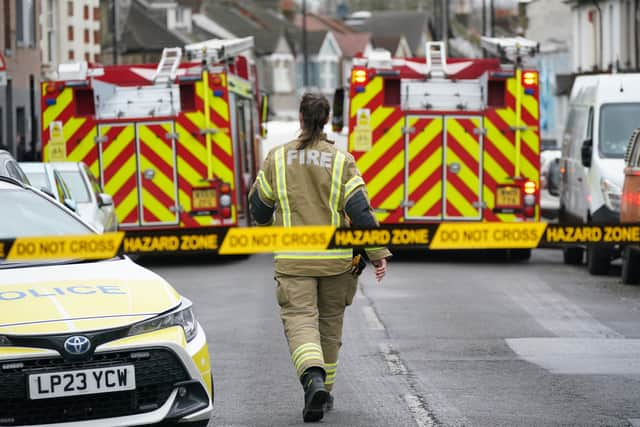Response times mean more people are dying in floods, crashes and medical incidents in South Yorkshire
and live on Freeview channel 276
There was an increase in the number of people who died in non-fire incident emergencies attended by firefighters in South Yorkshire last year, new figures show.
Across England, fire and rescue services attended more than 199,000 non-fire incidents in the year to March 2023 – a 2.3 per cent increase from the year before.


Advertisement
Hide AdAdvertisement
Hide AdHowever, fatalities at these incidents rose by 17 per cent overall, which the Fire Brigades Union said was caused by a decade of cuts and more firefighters leaving their jobs.
Firefighters routinely attend a range of emergencies other than fires, such as flooding, traffic collisions or assisting other emergency services with medical issues.
Home Office figures show the South Yorkshire Fire and Rescue Service reported 46 deaths in non-fire incidents they attended last year – up from 35 in 2021-22.
There were 3,875 deaths across the country, equivalent to 20 per 1,000 non-fire incidents attended.
Advertisement
Hide AdAdvertisement
Hide AdOne of the main drivers of the overall surge in deaths was a 52 per cent increase in the number of deaths in medical incidents. There were 624 recorded in 2022-23, with 11 in South Yorkshire.
A South Yorkshire Fire & Rescue spokesperson, said: “Firefighters have long attended a very wide range of incidents, including road traffic collisions and water rescues. Sadly, some of these non-fire incidents can result in fatalities, which have a devastating impact on our communities. We remain committed to preventing emergencies from happening in the first place, through our education initiatives and public safety campaigns. Our fire stations and fire engines are carefully distributed around the county, making best use of the funding and other resources available to us.”
Matt Wrack, Fire Brigades Union general secretary, said: "We have suffered more than a decade of cuts, with one in five firefighter jobs lost since 2010. The result is that response times are now worse than ever before.
"But we are also well aware that firefighters are increasingly responding to emergencies without the correct resources and fire engines.
Advertisement
Hide AdAdvertisement
Hide Ad"To reverse this trend, we urgently need investment from central Government."
In the areas covered by the South Yorkshire Fire and Rescue Service, there were 3,101 non-fire incidents attended – a 6.5 per cent decrease from the year before.
Of these, 417 were road traffic collisions, 98 were flooding or rescue from water, and 225 were medical incidents.
A spokesperson for the National Fire Chiefs Council said: "It is always incredibly sad to see loss of life at incidents that our fire and rescue service colleagues have attended.
Advertisement
Hide AdAdvertisement
Hide Ad"Whether that be a fire or other incident such as a road traffic collision or water-related incident, we know that it has a profound impact on the local community and the fire and rescue service.
"Fire and rescue services are committed to ensuring, through road and water safety and prevention work, that these fatalities continue to fall to achieve a greater reduction in the long-term trend.
"In areas such as medical incidents and collaborating with other emergency services, fire services have a wide range of ways in which they respond to incidents and support blue light partners, and these are based on local arrangements between fire and ambulance services."
A Home Office spokesperson said: "The Government is committed to ensuring fire services have the resources they need to do their important work and to keep the public safe.
Advertisement
Hide AdAdvertisement
Hide Ad"In 2023-24, fire and rescue authorities will receive around £2.6billion. Decisions on how their resources, including staff, are best deployed to meet their core functions are a matter for each fire and rescue authority."
